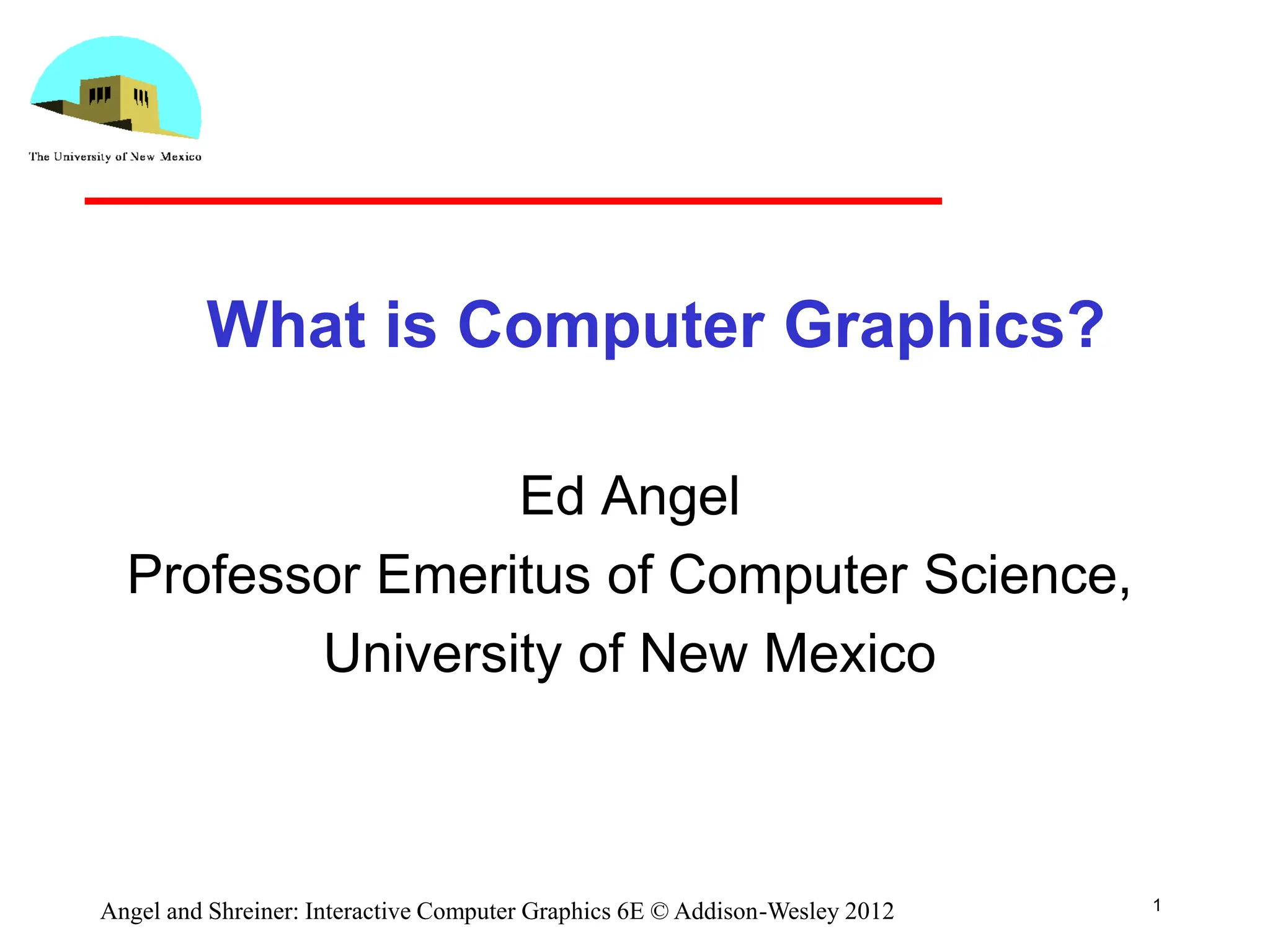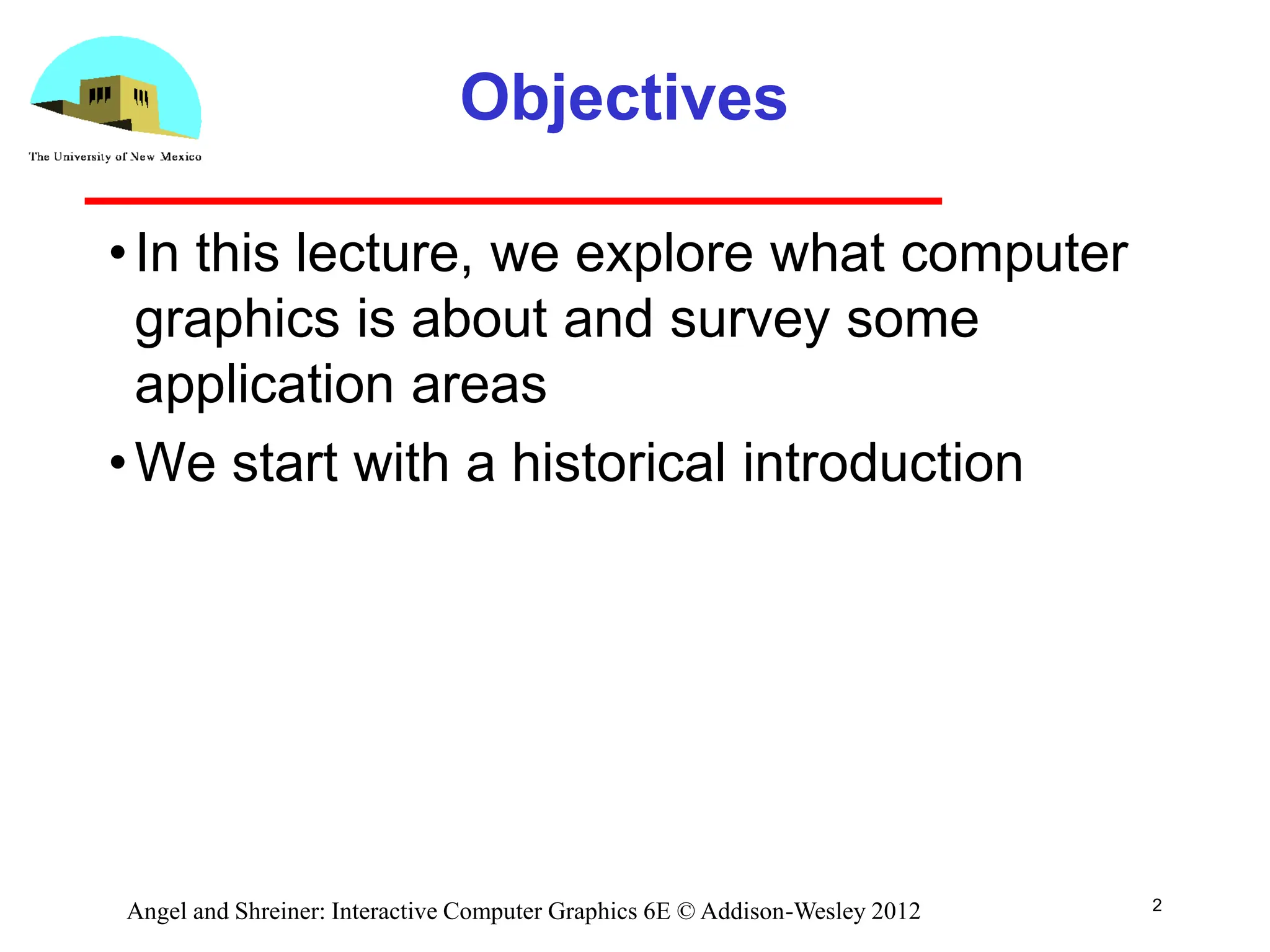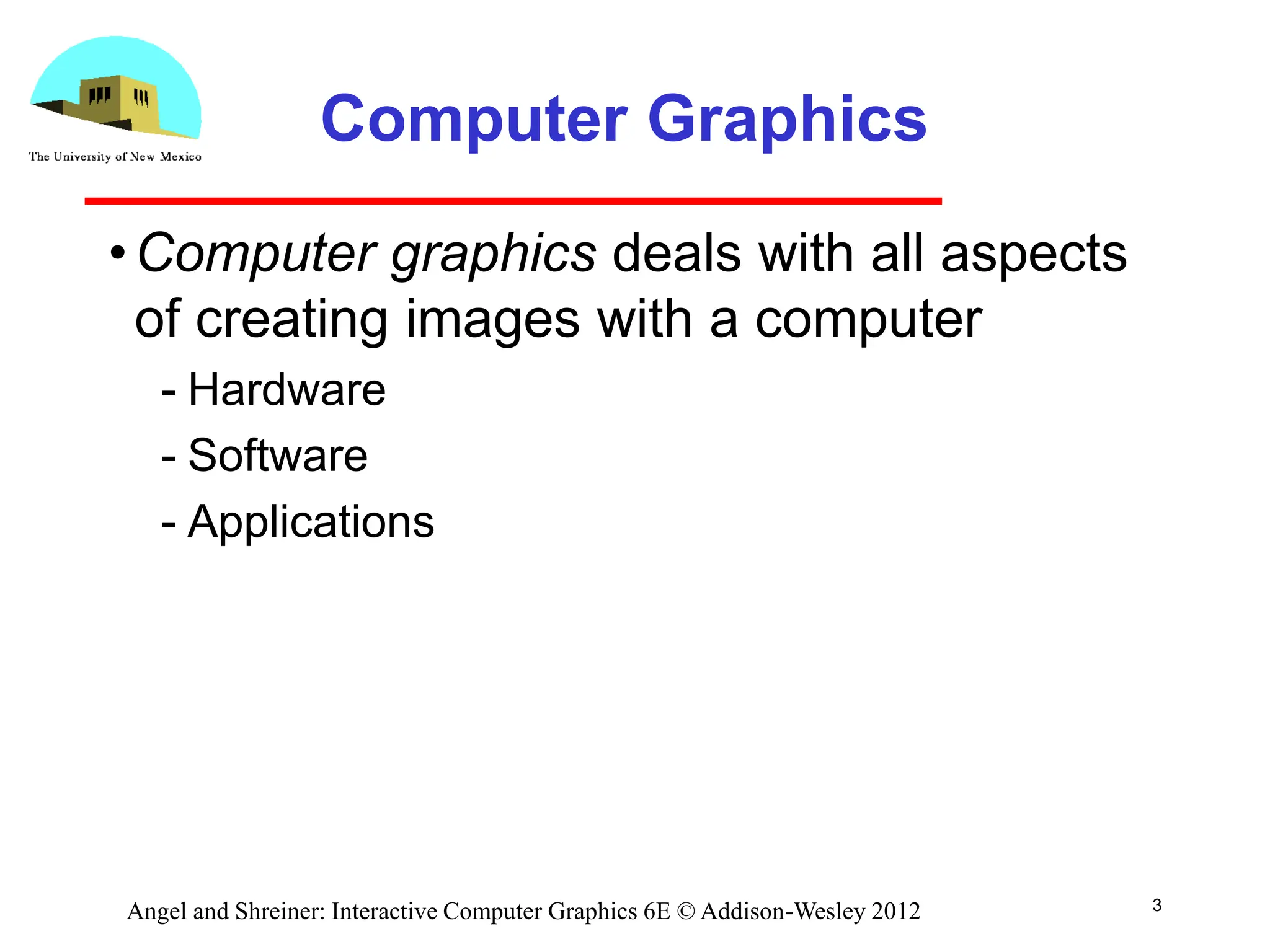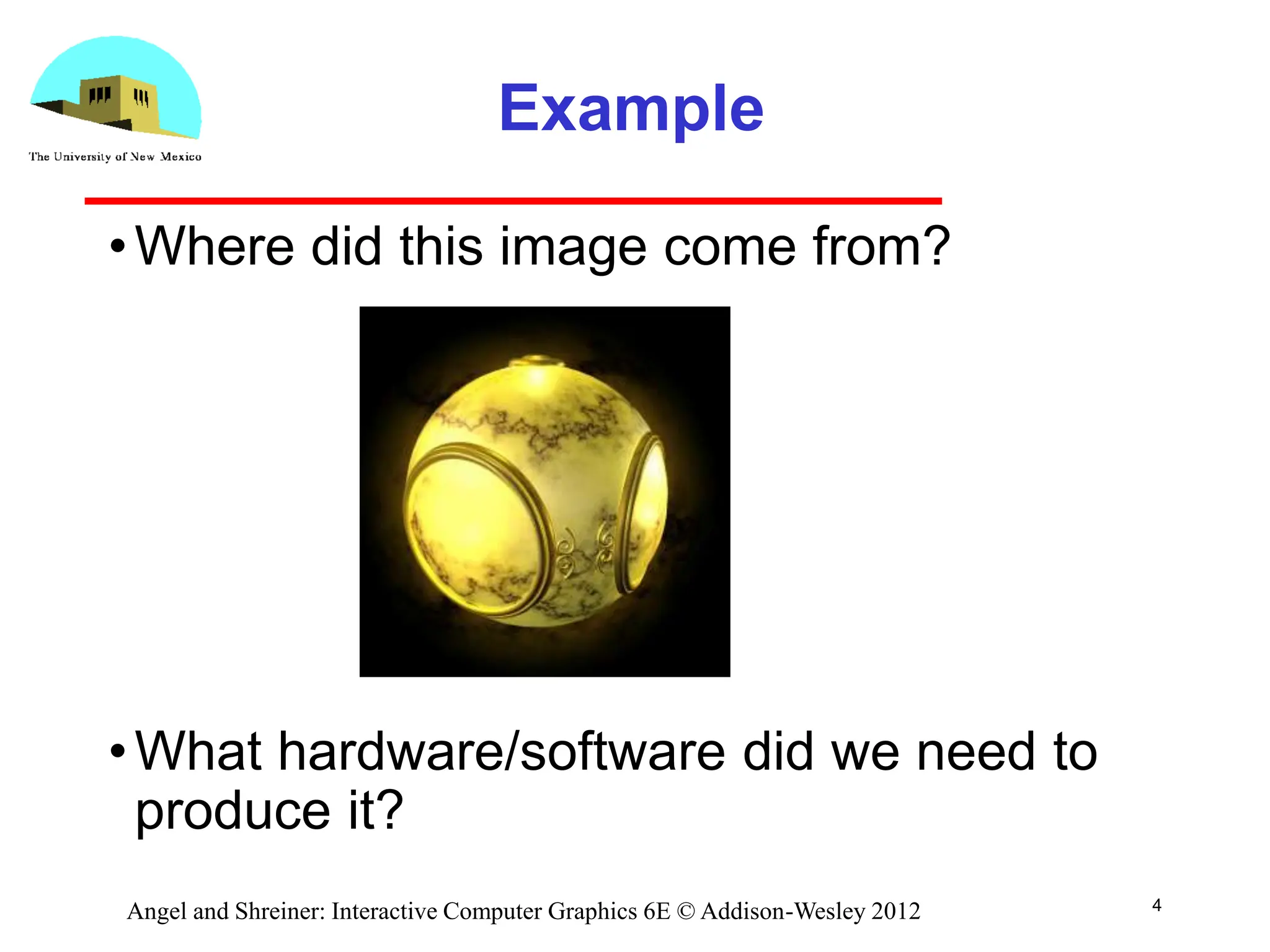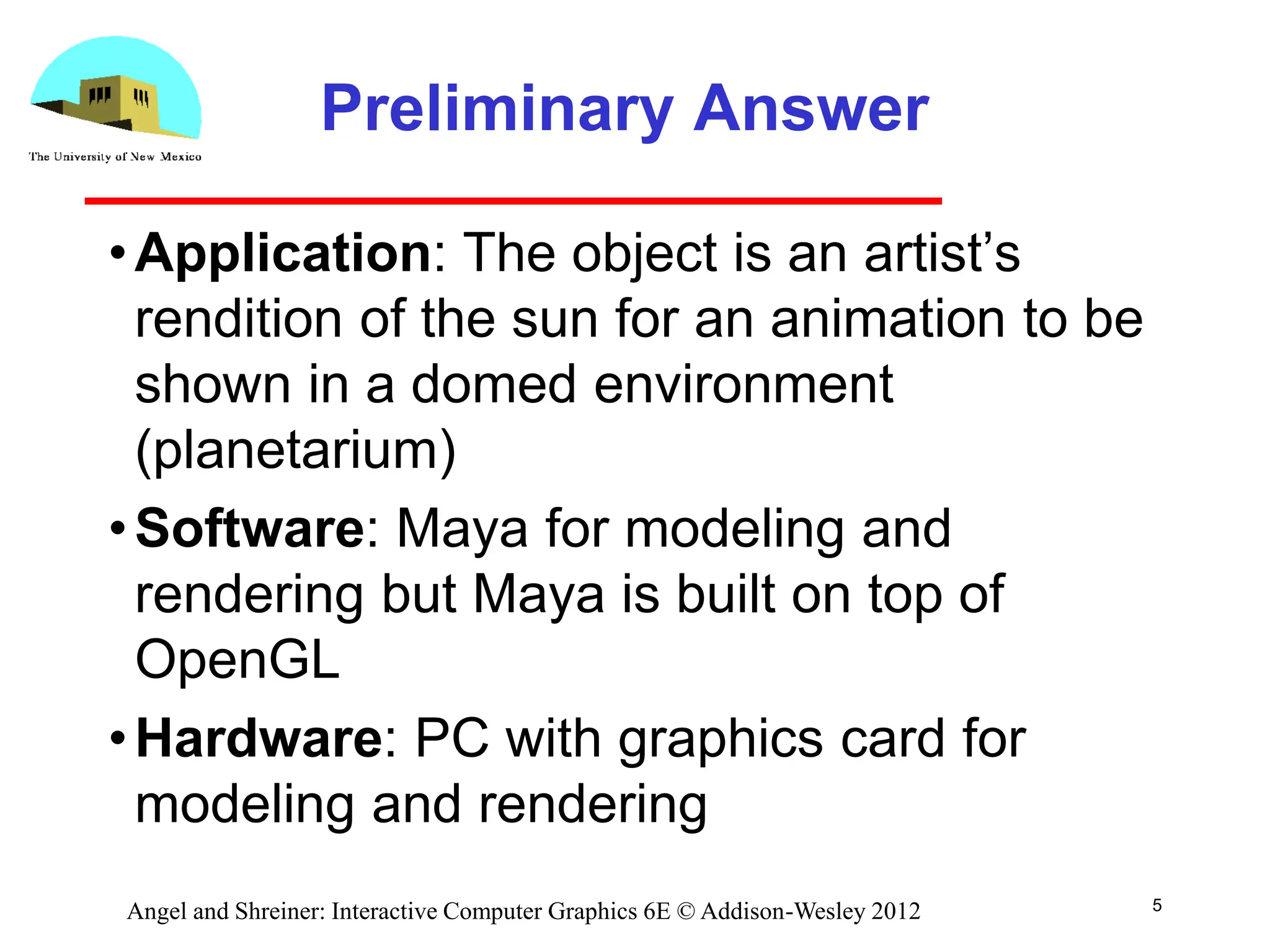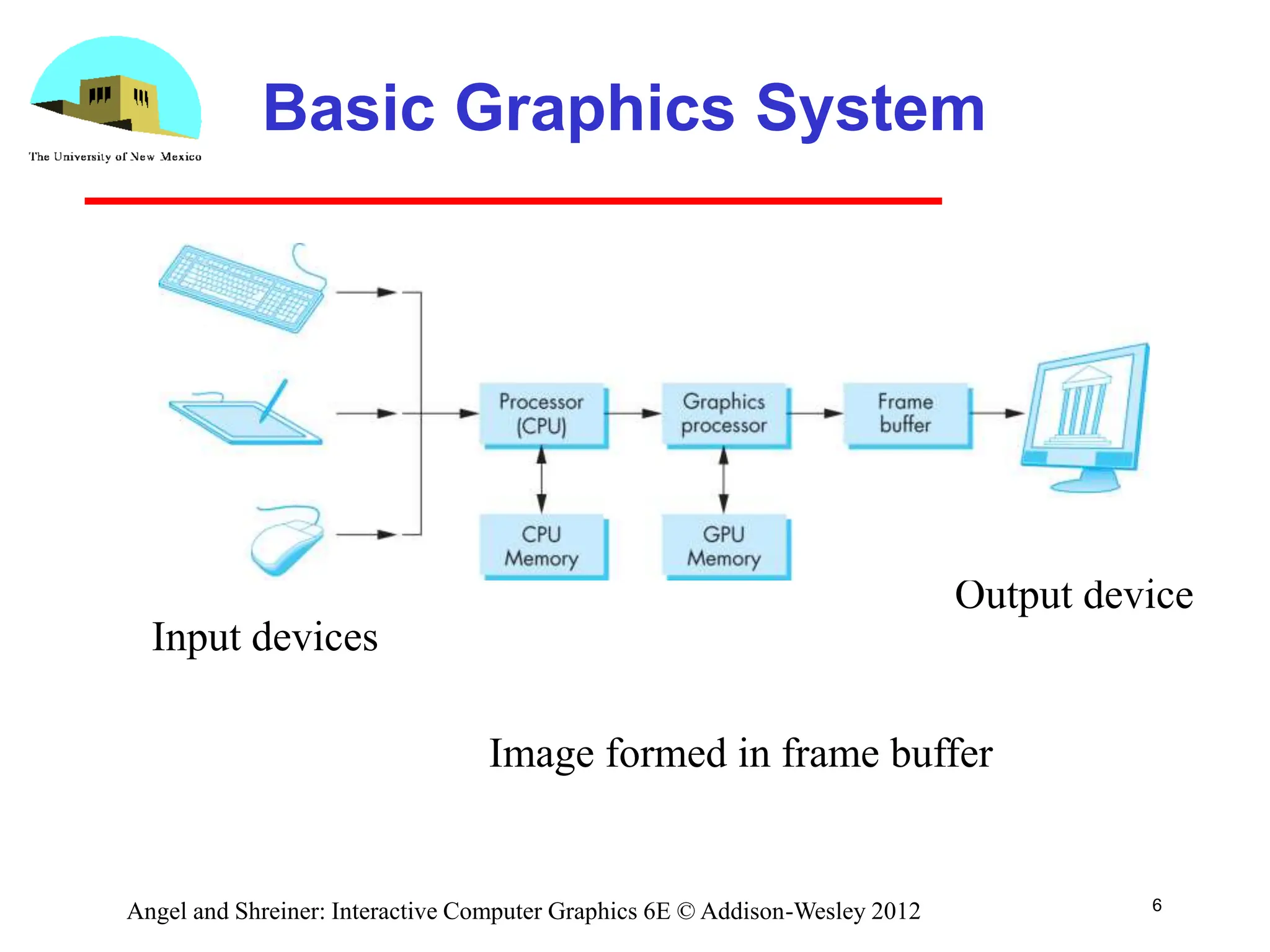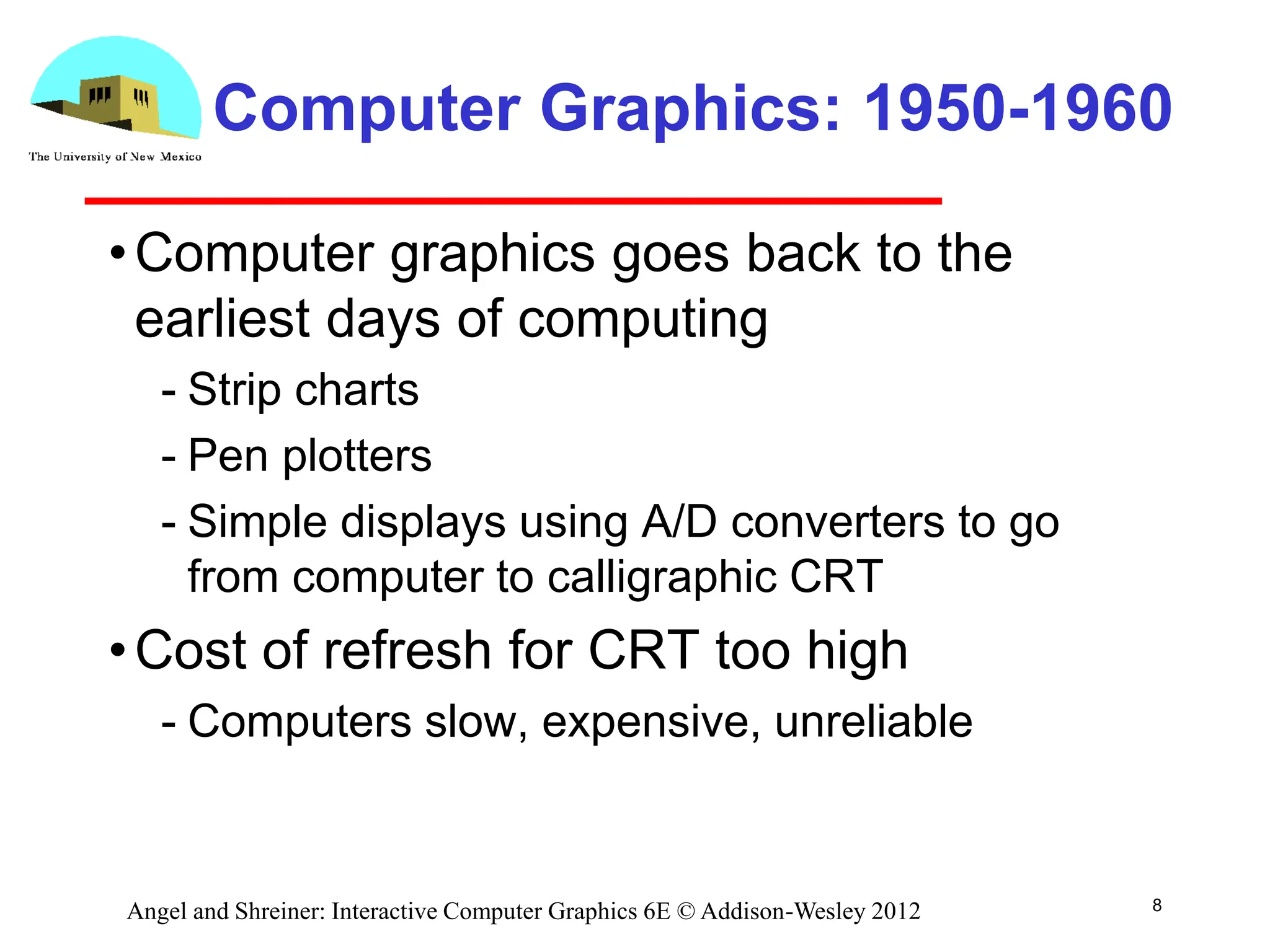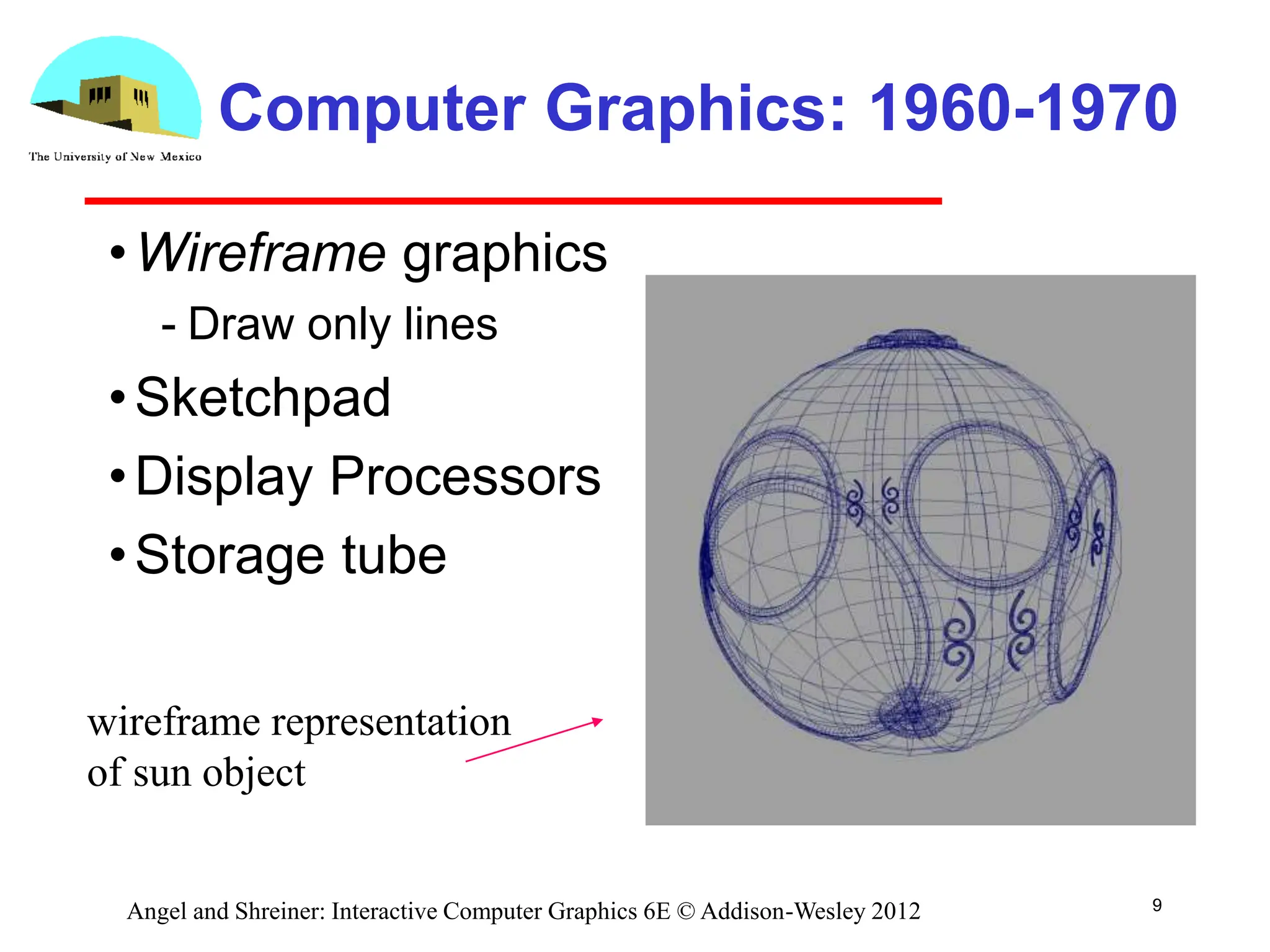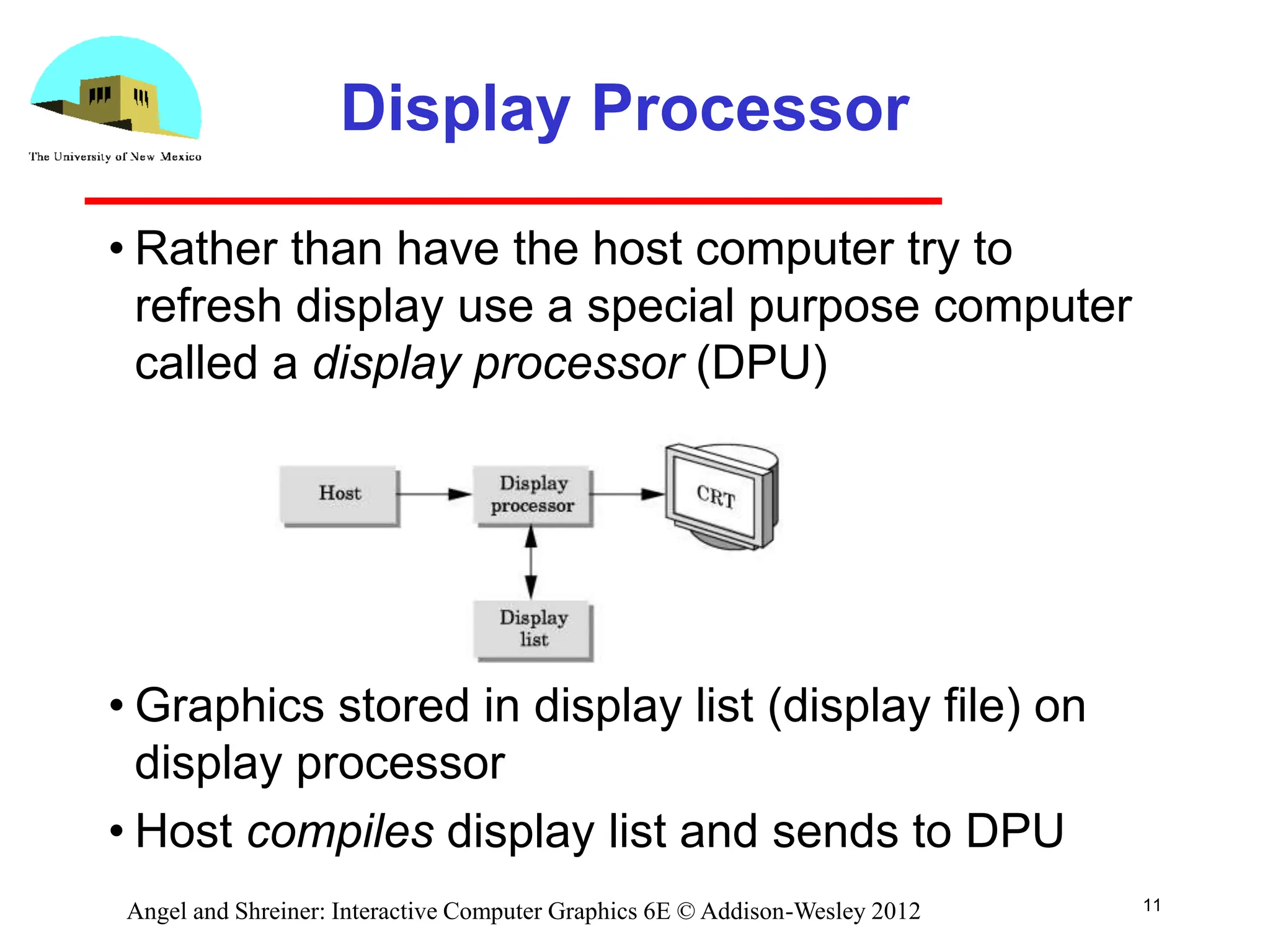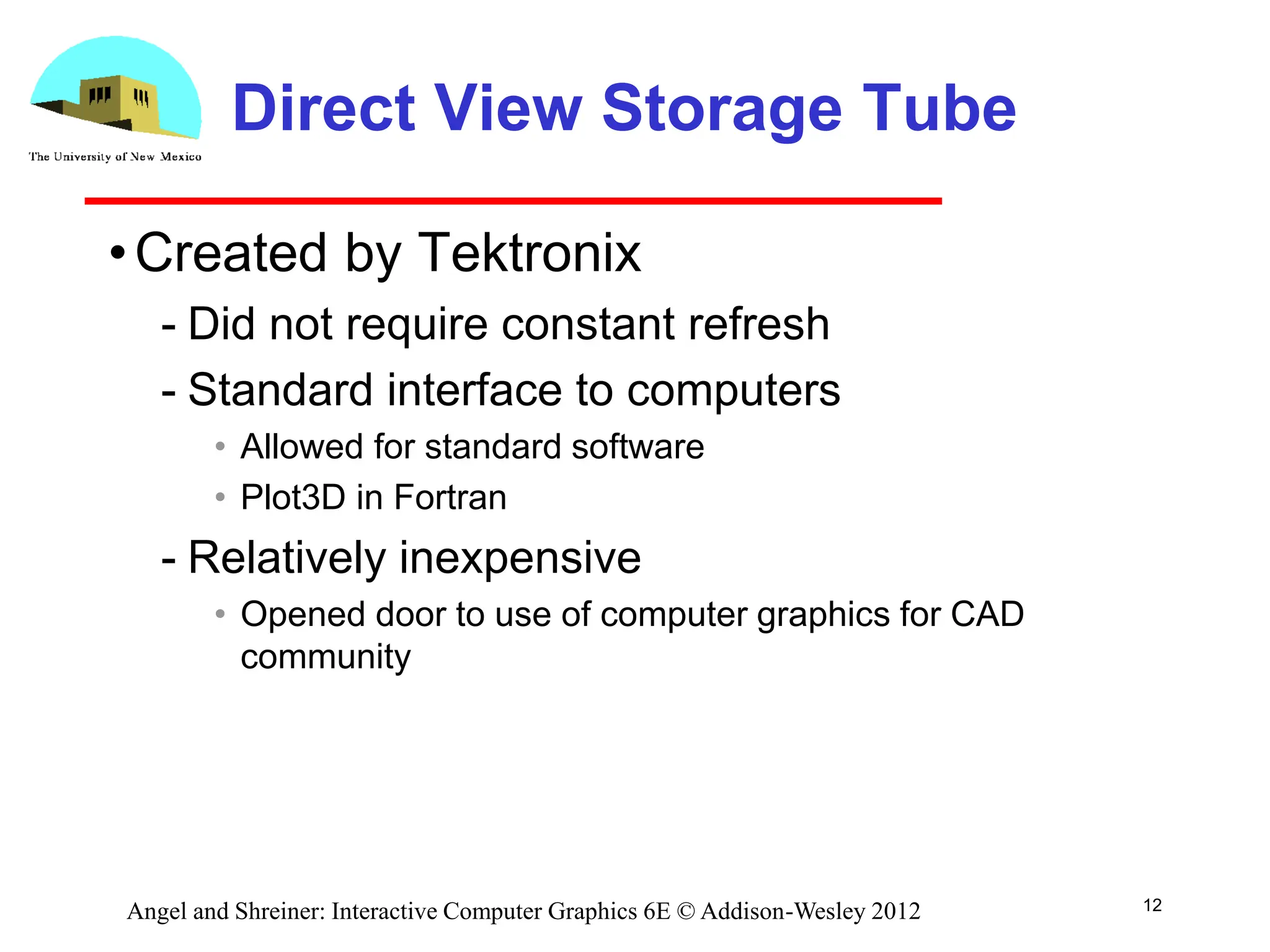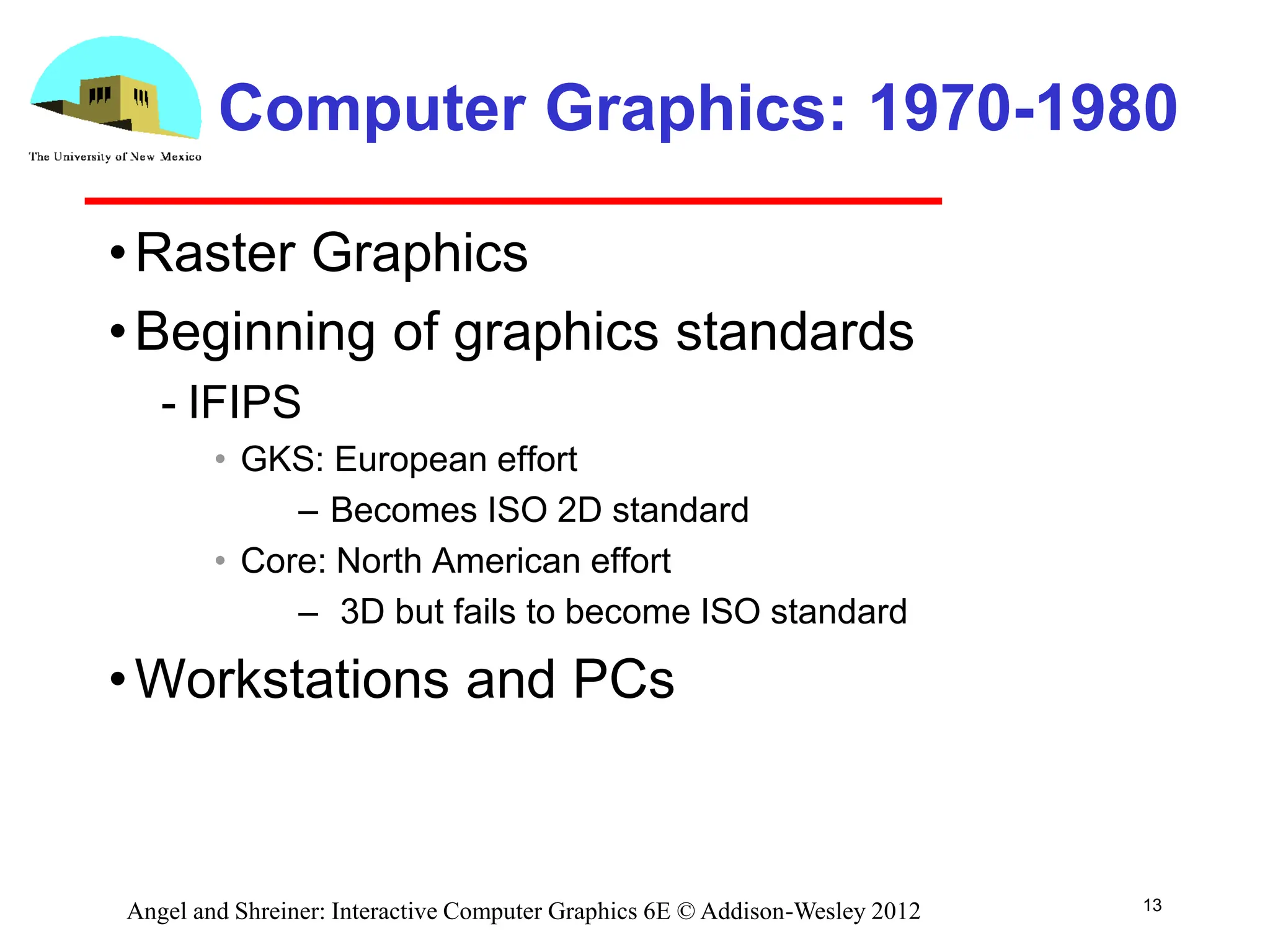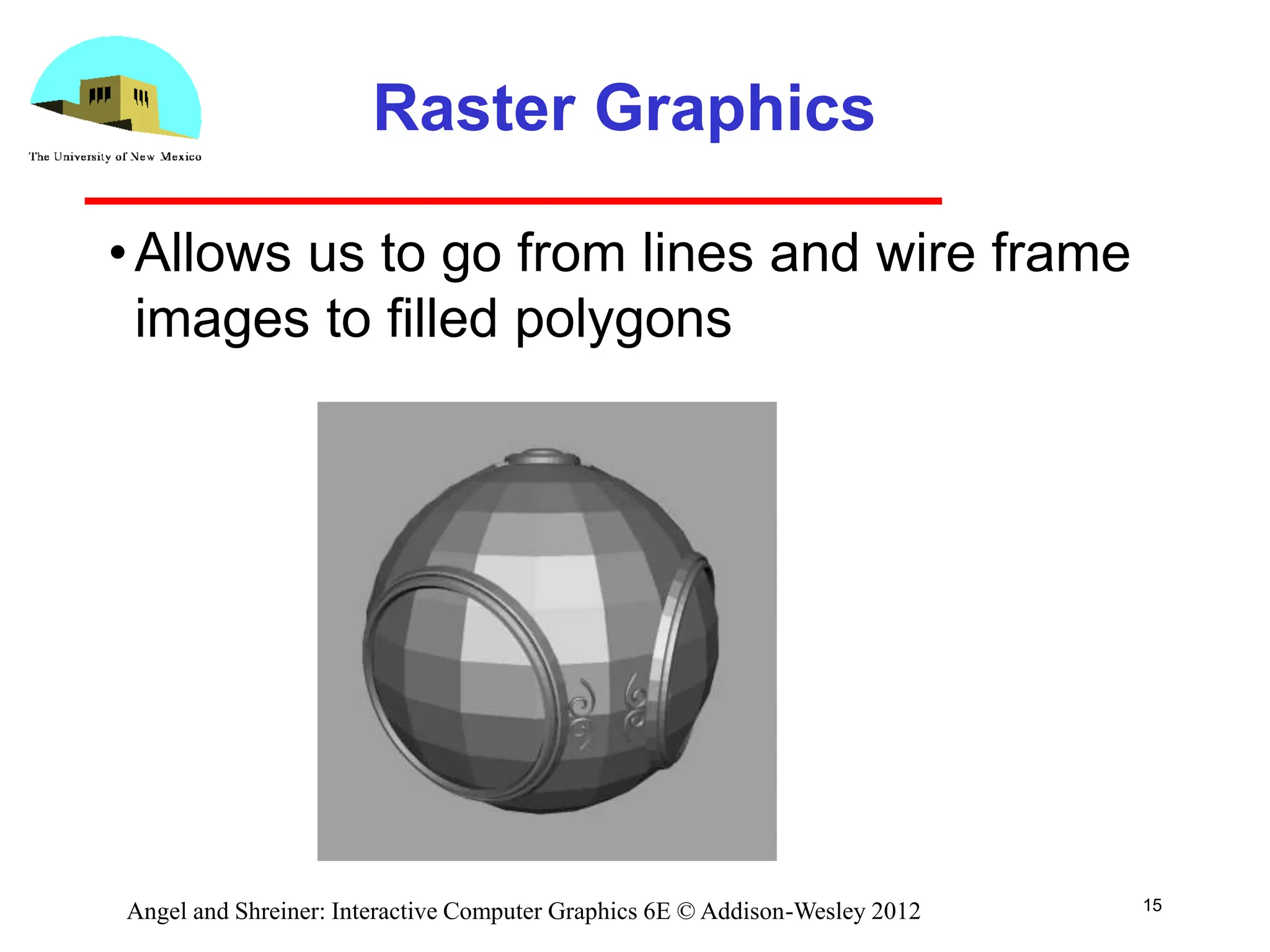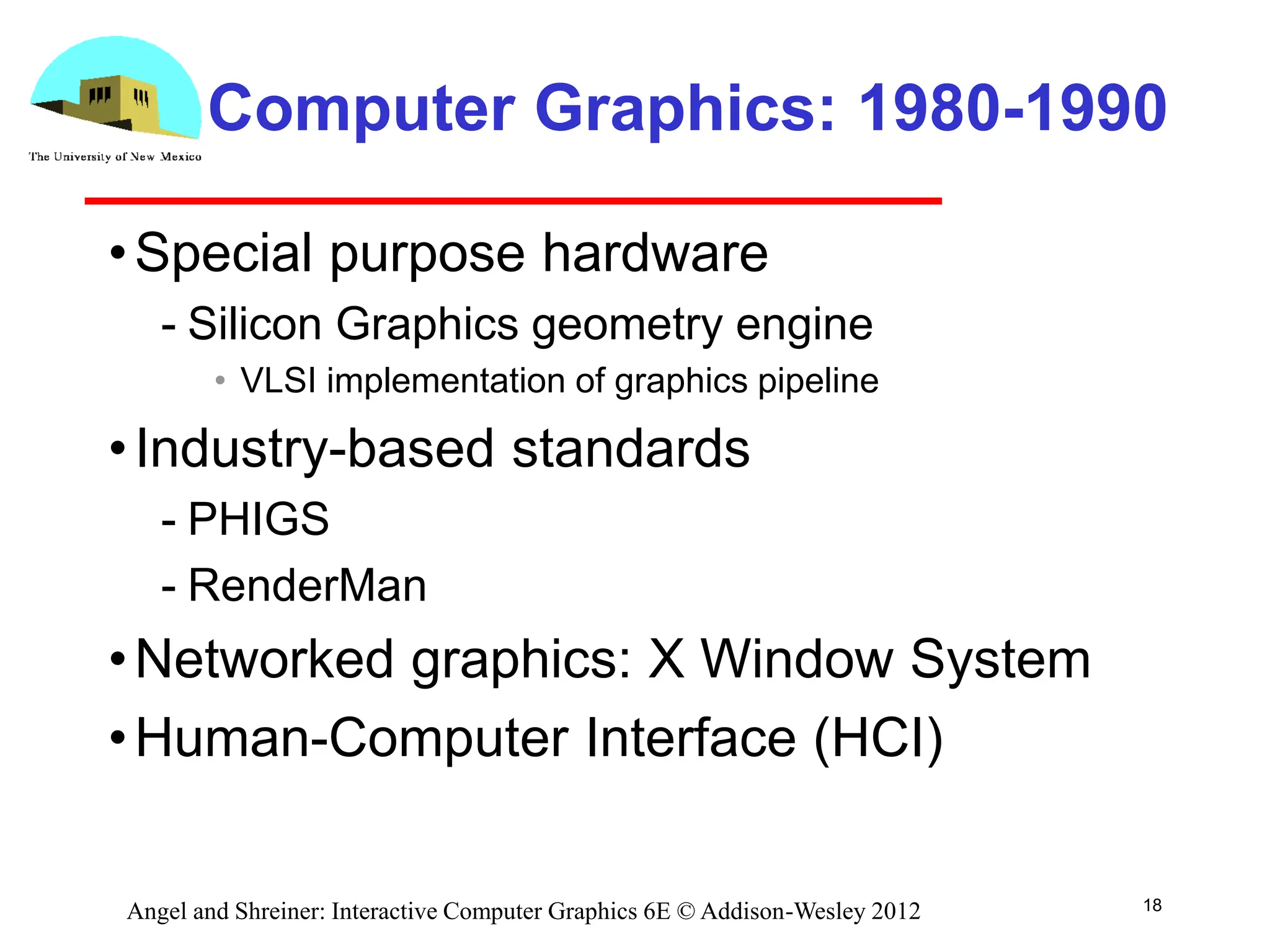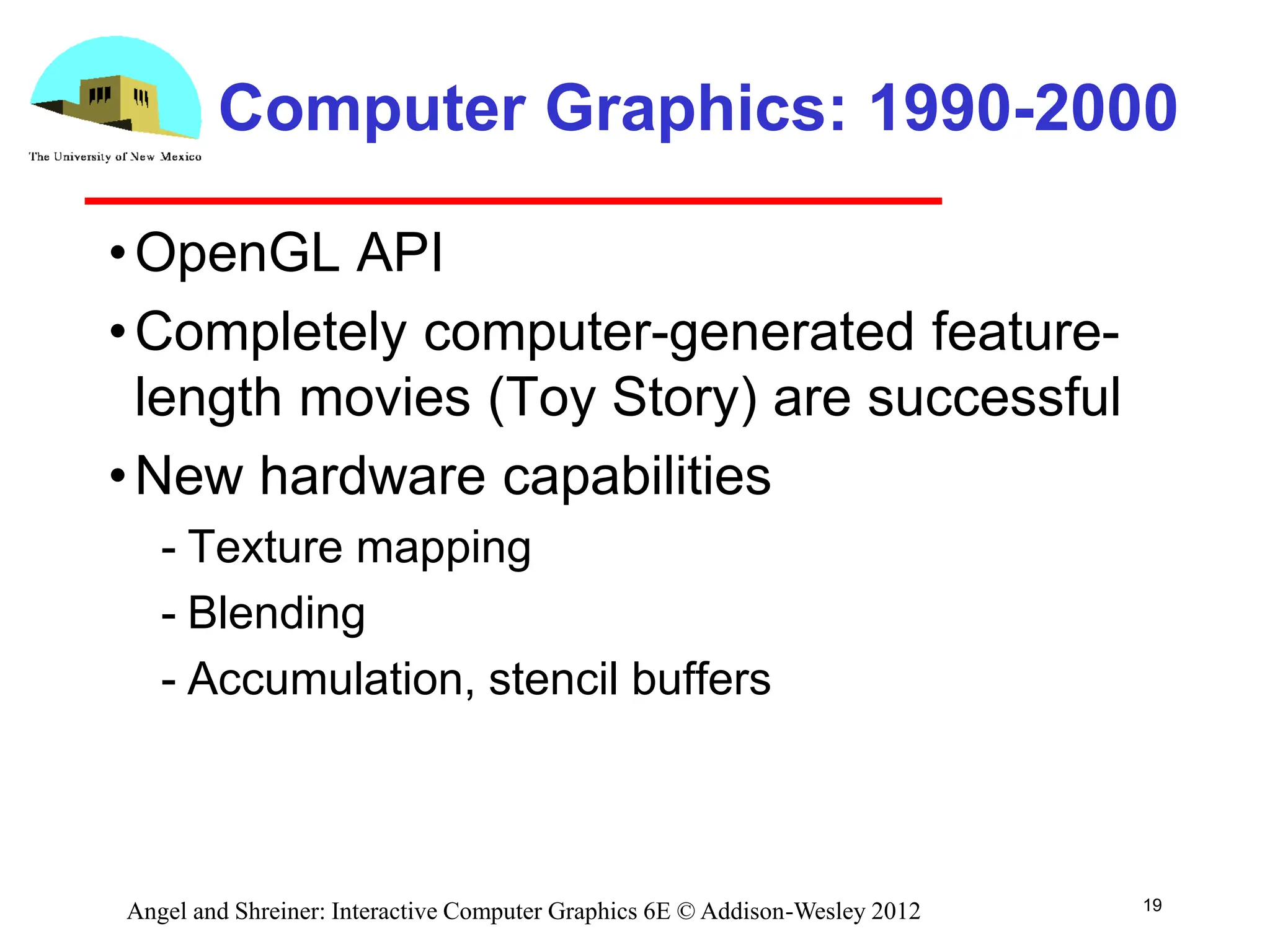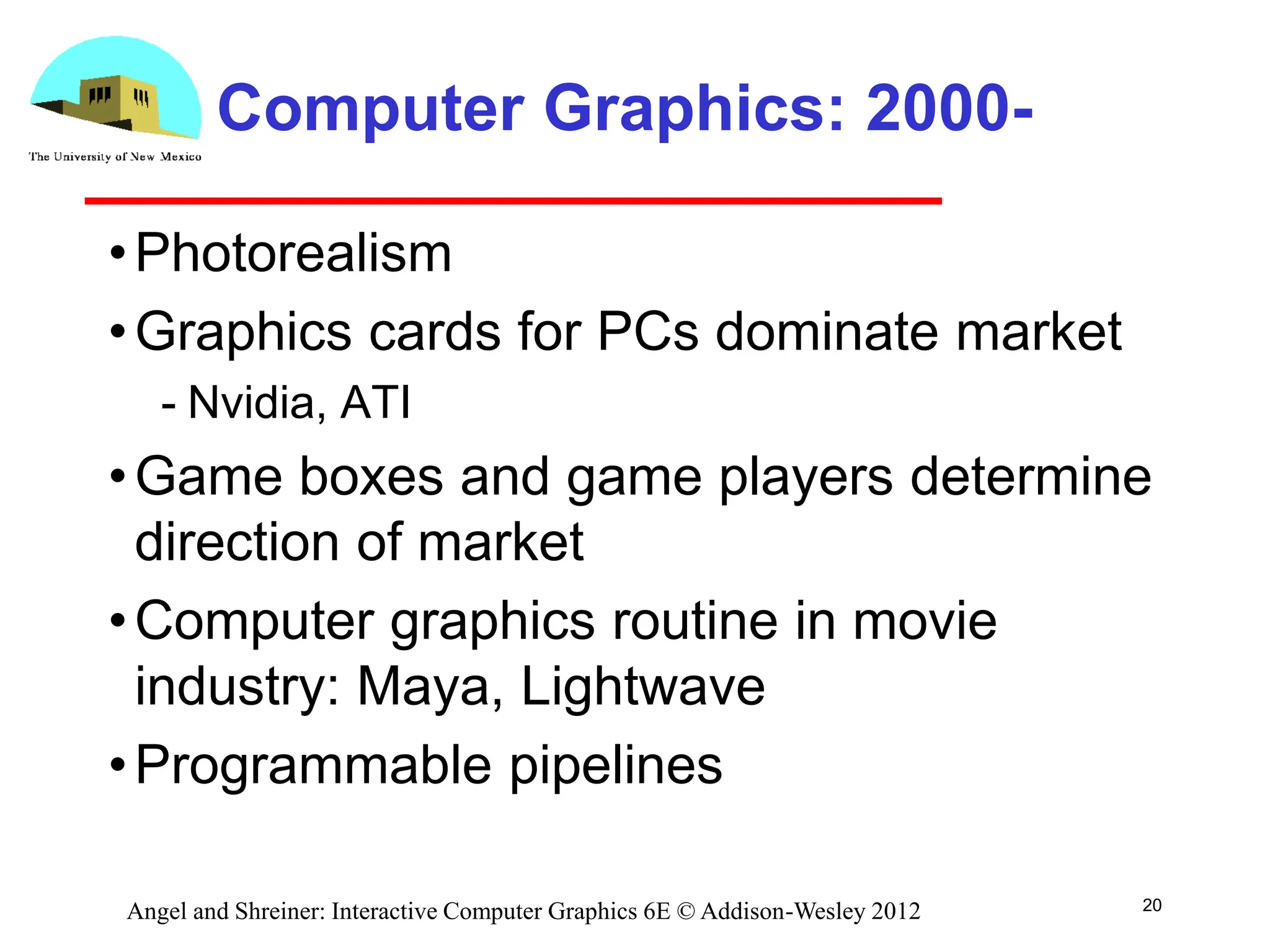This document provides a history of the development of computer graphics from the 1950s to the present. It describes the early uses of computer graphics for tasks like strip charts and pen plotters. Important developments included Ivan Sutherland's Sketchpad program in the 1960s, the introduction of raster graphics in the 1970s, and advances in realism through techniques like texture mapping and bump mapping in the 1980s. Standards and application areas expanded in the 1990s, and by the 2000s, photorealistic graphics powered by consumer graphics cards had become commonplace in gaming, movies, and other industries.
